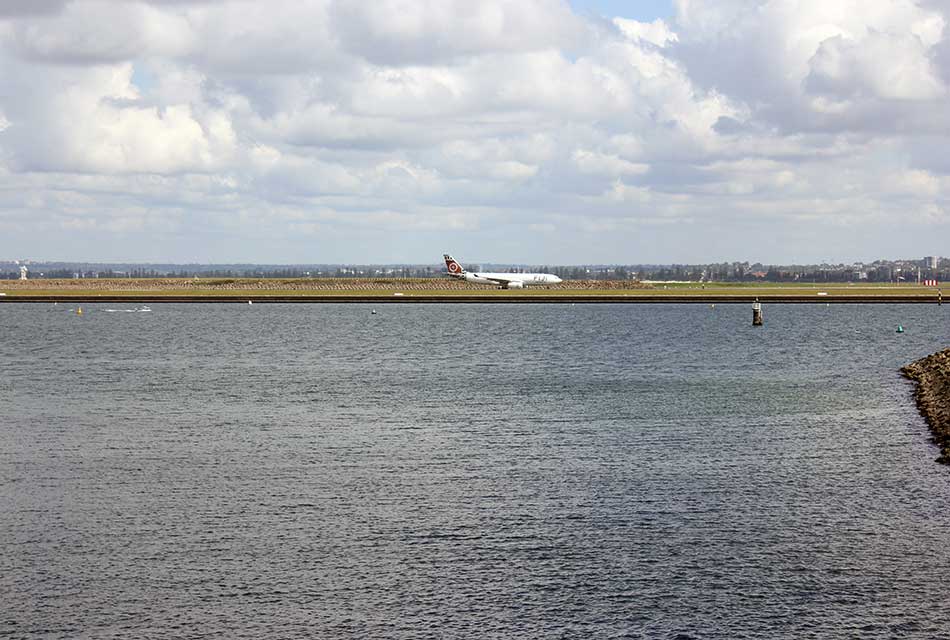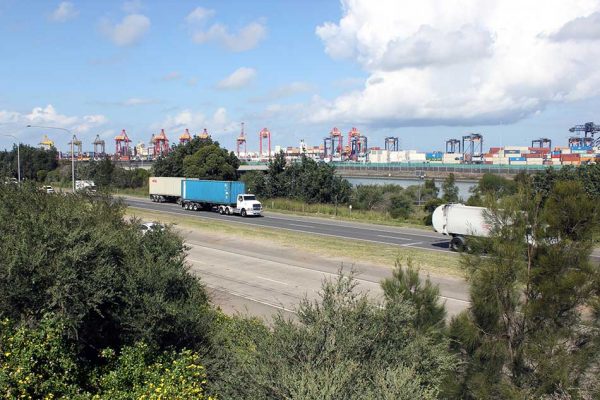How to wear a tree

Most textile dyeing happens, along with the weaving and cutting and sewing, in factories, mills and industrial workrooms in places unnamed and far away from Australia. Outside their own living environments the people who do the work are unthought of and undervalued. They are usually underpaid.
We are surrounded, almost non-stop, by textiles. They envelop our bodies and protect us, keep us warm, adorn our homes, make statements that are highly personal, help redirect anxieties and yearnings, allow us to conform or not conform, stand out or become invisible, and they saturate our visual and haptic and subliminal worlds.
Yet within these worlds of intimate connectedness to fabrics we are almost always profoundly disconnected from their beginnings.
+++
Samorn Sanixay is a Canberra-based textile designer who uses natural dyes for the fabrics she either weaves herself or has made by the weavers in their co-operatively owned studio in Vientiane, Laos. For her locally (Australian) dyed pieces the colouring materials are found during short but frequent foraging expeditions around the streets, parks, domestic gardens and industrial zones of Sydney, Canberra and regional New South Wales.
Some of these colour sources are materials one would expect: flowers, plants, seed pods — things purely botanical. Other sources are less expected: riverine mud, leftover fruit and vegetable scraps from the evening meal, rusted machine parts, the decaying leaves and dark, gritty sludge you clean from roof gutters in the southern Australian autumn.
About a year ago Samorn gave me a pink silk scarf. I like it for several reasons. I like the texture of the openly woven silk and its deliberately frayed edges. The way the pink, with just a hint of Prussian blue (the colour, not the chemical) sings against my current, unadventurous, econo-wardrobe of mostly dark navy. And I like where the pink comes from: the plump berries of a lilly-pilly in the front yard of Samorn’s house.
This is a type of attachment to place you could never have, say, through a scarf bought from an international clothing retailer, or even, regardless of the beauty of their immaculately screen printed silks, Hermes. I think this is not too much of an overplay; the thought that the scarf directly connects me to a tree. I’m wearing some of a tree. I can visit it. It has a street address.
In late April 2019 I went for a walk with Samorn and Heidi Dokulil through Botany, a suburb of inner Sydney with a colonial history that some Australians have conflicting feelings about. This is partly because Botany is the site of Cook’s landing and first encounter with the Aboriginal owners, and as a result, the site of some of the first incidents of ill-treatment of the country’s original inhabitants by the British. The other reason is that some Sydneysiders think of Botany as, to use a classic Australian colloquialism,… daggy.
When Cook visited in 1770, Botany Bay was a rich source of food: fish and oysters, birds, goannas, possums, wallabies and edible plants for the Kameygal (spear clan) people on the bay’s north shore. Now the freshwater creeks are covered-over drains and the bushland has been cleared for airport runways and a vast shipping container terminal.
In Sydney’s housing market, Botany is not a longed-for residential address, although its nearness to the central business district and the restlessness of the ever renovating, cashed-up ‘haves’ may soon change this.

Botany has its own charm, however. There are modest houses and cottages in its residential streets with their discreet garden patches interwoven with small factories and trade workshops. The Port Authority has been replanting native species along the shoreline and building paths for walking and cycling that partly run alongside a 4 lane expressway full of semi trailers and tailgating delivery vans. The contrast is striking, and in its own Botany way, beautiful: massive red and yellow cranes hovering over stacks of multi-coloured shipping containers, the growl of gear changing semis against the almost silent (in the far distance) international passenger jets taking off and landing on a seemingly endless, perfectly flat landscape of tarmacs — all of this framed by banksias, coastal she-oaks and tea-trees.
A walk through the reclaimed bushland and residential streets allows a way of seeing Botany that one could not see so fully, through say, a council website, or even a site exclusively dedicated to its history or flora. In the real and many-dimensional world — the one not made of pixels or ink — the place is full of the fragrance of eucalypts and diesel, the sounds of birds and people making stuff with pneumatic hammers and angle grinders, and specifically, for this account, it is a place full of materials for both textile dyes and small unexpected patches of things to eat: plant species, native or introduced; guavas springing up out of roadside verges because someone discarded the remains of their lunch there; tiny private herb gardens hijacking public footpaths between the long-established paperbarks; a big carefully tended bunch of bananas suspended precariously over a tradie’s parked Hilux ute, red dahlias, wild geranium, salvia, pink azalea, bougainvillea, pigface, spiderwort, frangipani, and many invasive species brought in after Cook’s landing.
+++
When a person enters a city
There are many criteria from which cities can be measured, and as a result, rated; typically (in urban lifestyle media) for liveability.
For these assessments, presumably questions are put forward. Something like the following.
How efficient is its transport system?
Is it a place with clean air? Clean water?
Does it have quality housing at an affordable price?
Enough jobs? The right institutions? Community services?
A vibrant arts industry? Journalistic freedoms?
Parks and recreational facilities?
Social supports?
Does it create happy tourists?
All of the above being derived from a long list of things we would want to see in a liveable city.
Within that same city of measured train frequencies, housing quality appraisals and stats on career openings, a space also exists for a slower, less indexed, more imaginative type of reflection; with a different set of questions, still connected to liveability and well-being but decoupled from the idea that an inhabitant is somehow always in this state of passive receptivity that the measured city, the city where every desirable attribute has a price, seems to constantly place us.
The city is a collection of first-hand exchanges between a person and a place. When a person enters a city, the city enters that person. How could it not? If you have been touched in the slightest way by a walk down a narrow back lane jammed with flowering frangipani in Sydney’s Darlinghurst, or exhilarated by a chaotic, late night scramble across Tokyo’s Shibuya Crossing, or spent a half day in a shiny shopping precinct fantasising about how the new look could change your life for the better forever, or felt a pang of sadness when passing one more beautiful city building about to be gutted for multi-million dollar apartments — a transference has happened, and some of the city now lives inside you.
Who knows how any of this — a walk through Darlinghurst / empathy for a piece of architecture — can be quantified, but regardless, we know that our senses and imaginations were activated and in effect we have had a conversation with a city that provides more than efficiencies and material guarantees for well-being.
The city of transferences evokes other questions.
What is this place we find ourselves in?
Where are we going?
How can we learn from other cultures?
How can we make this place more fair?
What do we really lose of ourselves when we lose a remarkable building, a language, an historical truth about our colonial past, a 4 million year old marsupial, a 300 year old tree?
We won’t hear these questions being asked in the travel section of a weekend newspaper, or the website of a city’s chamber of commerce, or in a tips list on how to fix Helsinki in an urban lifestyle magazine, or in the glib speech of a right wing politician spruiking the virtues of coal and the urgent need to ramp up national security surveillance. However, within a more poetic framework with which to see cities we can begin to give fragmentary answers at least, to some of the questions in the last paragraph.
What is this place we find ourselves in?
The city is an endless collection of first-hand attachments between a person and a place.
The city is a chronicle of its history that can be read through things lost (species, languages, cultures) and things found (colours, convergences, architectures).
The city is a poetic transmitter; an atmospheric reservoir; a book; a palimpsest; a dance.
The city is a site for the intense convergences of ideas.
+++
Notes:
Samorn Sanixay, Eastern Weft, Australia/Laos
easternweft.com
Graeme Smith, Heidi Dokulil, Good Habitat, Sydney, Australia
goodhabitat.com.au
I like the following set of questions from the Welsh designer/author, John Chris Jones, in his public writing site. From memory, I think he had just read a newly published book on craft in India. (His web archive is so vast I have been unable to relocate the page but this is the text I copied at the time of viewing.)
1
what do we mean by civilisation?
2
what kind of world are we trying to construct (with new media particularly)?
3
how can we improve our perception of ancient cultures… how can we learn from them and achieve a modern way of living to be proud of?
4
is there any way in which the quality of these ancient things and ways of life can be resurrected and shared with everyone?
5
so when is this collective wisdom (from the world of arts and crafts) going to be taken more seriously than banking and profit and the so-called bottom line?…
John Chris Jones
publicwriting.net
Lilly-pilly, Acmena smithii
Australian native, dark-green tree, 8-30 m.
Photography
Botany Bay April 2019
GS
